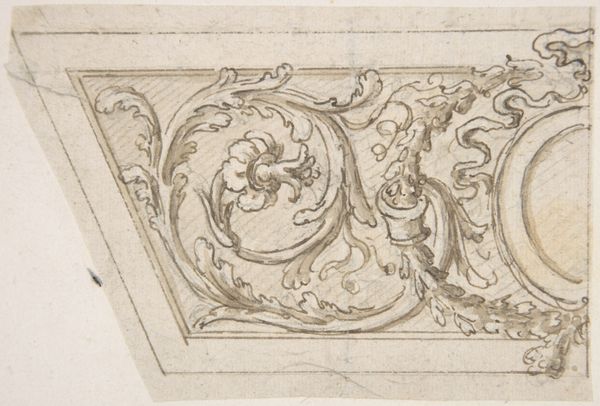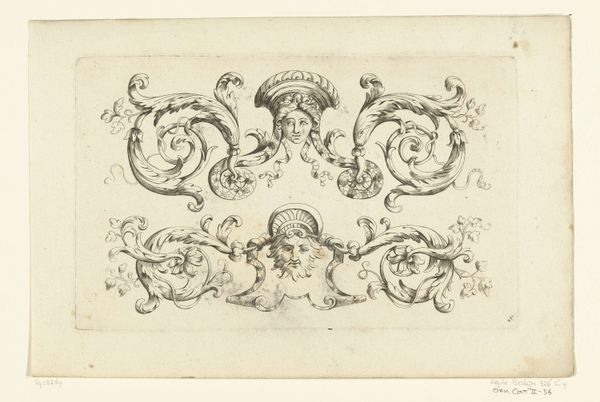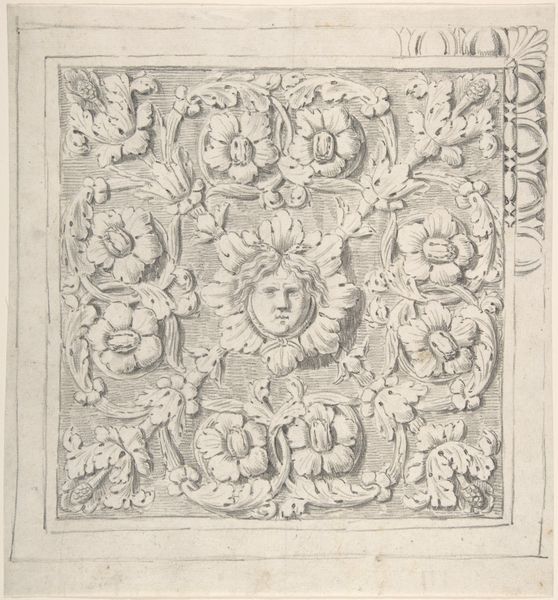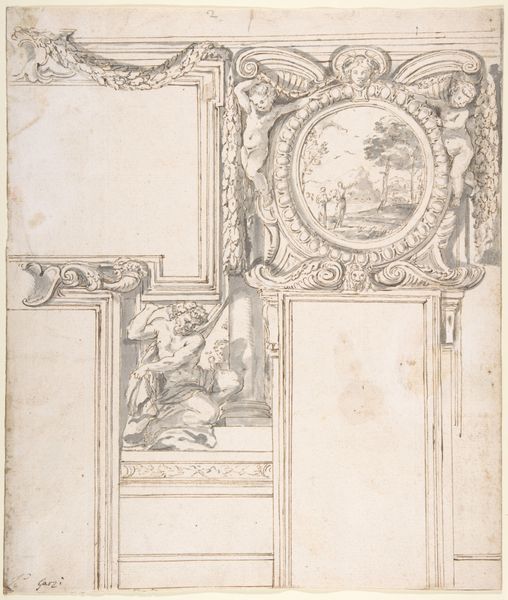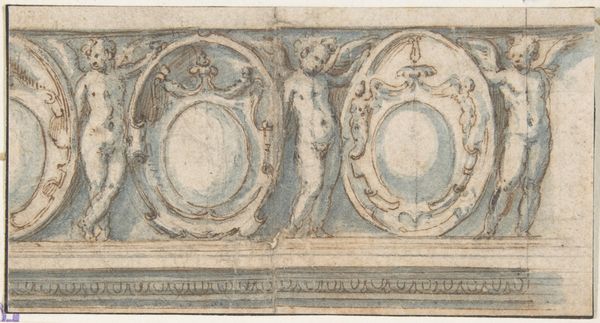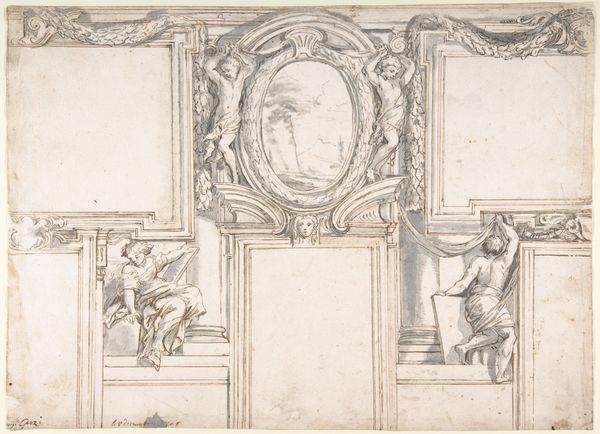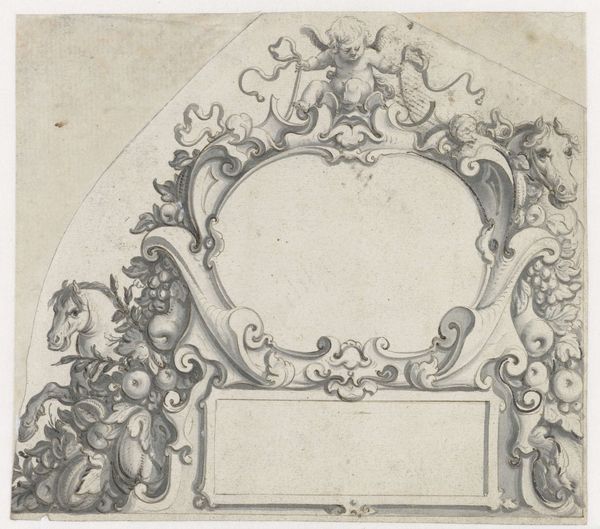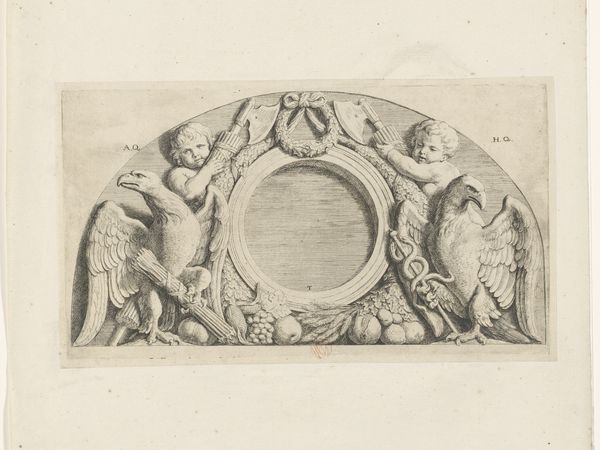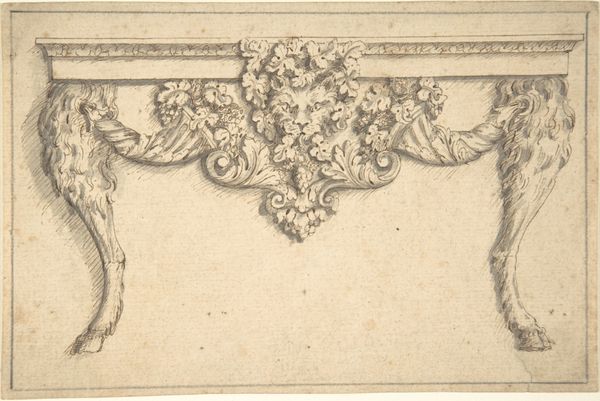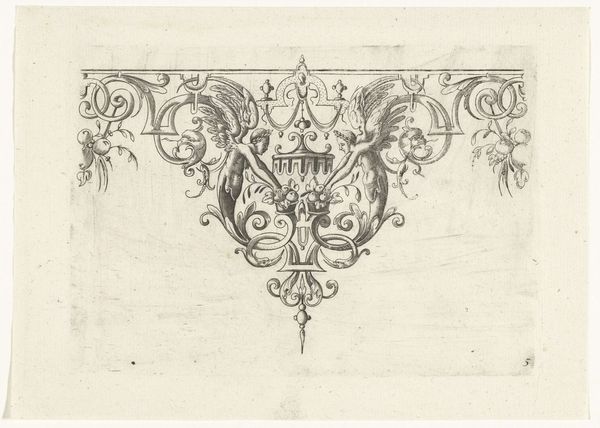
Classical Molding with Human Head, Leaves, Vines and Empty Roundels (recto); Detail of Classical Molding with Eagle In front of a Wreath with Ribbon Below (verso) 1776 - 1779
0:00
0:00
drawing, print, pencil
#
portrait
#
drawing
#
neoclacissism
#
ink drawing
#
head
# print
#
classical-realism
#
form
#
pencil
#
line
Dimensions: sheet: 7 7/16 x 8 1/4 in. (18.9 x 20.9 cm)
Copyright: Public Domain
Curator: Immediately, I feel a quiet solemnity. It's a subtle piece, almost melancholic. What do you see? Editor: This delicate drawing from the late 1770s is by Thomas Hardwick. He was envisioning a classical molding; the artwork is aptly titled 'Classical Molding with Human Head, Leaves, Vines and Empty Roundels'. What strikes me is the artist's hand; the medium used here are pencil, print, and ink drawing. Curator: It's interesting; I keep coming back to that central head. It’s surrounded by these flourishing botanical elements, vines almost like constraints. It gives the feeling of nature both celebrating and trapping humanity, perhaps. The blank roundels too; are they expectant voids or poignant absences? Editor: Those are quite evocative reflections. Symbolically, classical designs during that period—Neoclassicism was ascendant—sought order, reason, a kind of return to idealized forms. The human head becomes part of that architectural vocabulary; a stoic element in a grand design. The eagle on the back even more. We’re seeing the language of power. But maybe Hardwick subtly undermined it. What else do you suppose is captured in this drawing? Curator: Well, perhaps the "perfect" form is undone by this very human face! There’s a vulnerability there; an imperfection at the heart of this ideal. Think of the rough-hewn nature of architectural remnants and monuments that remind us of history today, ruins overtaken by wild plants and life! What if he wanted us to reflect on those? This interplay creates an ambiguity that elevates the whole piece; beauty shadowed by impermanence, hope tempered by fate, mortality's effect on memory and place. Editor: That offers a richer view. It’s fascinating how what appears as a straightforward architectural study becomes a layered contemplation on humanity, time, and even emotional architecture itself. Thanks for letting my archetypal iconographer in! Curator: My pleasure. It is these emotional reactions that truly draw me in to any work!
Comments
No comments
Be the first to comment and join the conversation on the ultimate creative platform.

